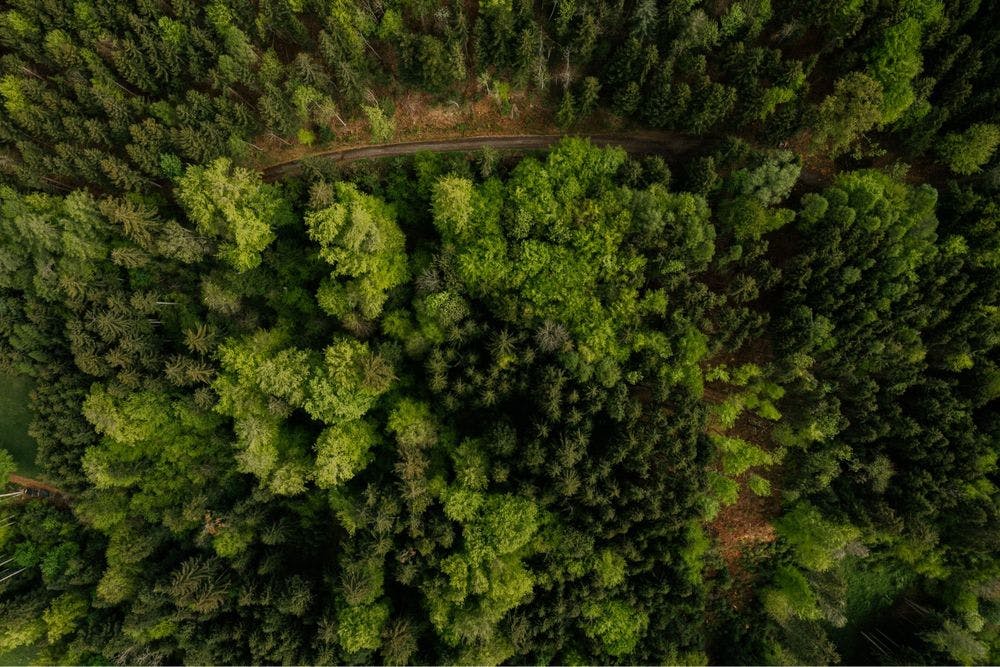
Transparent, precise, regional: How Tree.ly differentiates itself in the CO₂ market
12/5/2023
|

Moritz Lutz

Efforts to keep global warming below 1.5 degrees are crucial. However, private funds flowing into climate protection projects worldwide have, unfortunately, been ineffective. In this post, we take a close look at how Tree.ly is setting new standards with transparency, precision, and regional focus.
Challenges in the CO₂ market
Ineffectiveness of previous CO₂ project types
-
Only about 2% of projects in the Clean Development Mechanism, the first major offsetting program, simultaneously exhibit additional and conservative certificate generation (Cames et al. 2016). Thus, 98% of these projects are either overestimated (generate too many credits) and/or would have occurred anyway.
-
A study of all major cookstove projects revealed that only about 1 in 6 issued tCO₂ has actual impact (Gill-Wiehl et al. 2023).
-
Improved forestry and REDD+ projects mostly suffer from significant overestimation of impact due to non-conservative baselines, problems with leakage, and inadequate safeguards against setbacks (Guizar-Coutiño et al. 2022, West et al. 2020, West et al. 2023). Learn more in relevant articles, including The Guardian, Thred and The New Yorker.
Tree.lys perspective for real impact
The identified problems do not stem from incompetence or malice but from an immature methodology and the challenging circumstances of data, monitoring, and dynamics in developing countries.
Other providers
Old approachThe focus is on compensation, offsetting your own carbon footprint
Problems of these projects
Certificates are issued before the completion of the projects
Questionable project standards, unclear control mechanisms
Mainly unclear use of funds
Anonymous tCO₂
Significant overestimation of impact due to aggressive calculation bases
Lack of transparency

Our approach at Tree.ly
Real ImpactTaking responsibility, making a contribution to climate protection
Benefits with Tree.ly
Certificates are issued annually after thorough verification of the measures
Annual inspection by TÜV
100% earmarked use of funds
Immediate support for the forest owner
Realistic calculation of impact through the TÜV-confirmed conservative calculation basis
100% transparency through project registry & action plans
Regional focus in forest climate protection projects
While capital flows to the Global South must be a key component of global climate efforts, Tree.ly starts at home first. Tree.ly projects take place in the home countries of emitters. This way, we not only avoid double counting under Paris Agreement Article 6 but also contribute to the EU's ambition to become the first climate-neutral continent by 2050.
But how do we avoid endemic issues in forestry projects worldwide? Our methodology according to ISO-14064-2 (2019) has been audited and validated by TÜV Nord. The points mentioned below have been confirmed by TÜV.
Evidence of effectiveness of CO₂ projects with Tree.ly
-
Additionality in commercial forests is captured in the baseline based on yield tables, strong historical data in the respective forest, and forestry use.
-
Our calculation methods and assumptions have been scrutinized at each step and assessed by TÜV as conservative.
-
Internal leakage is avoided by our forest owners committing with their entire productive forest area. External leakage is also demonstrably avoided.
Tree.ly goes beyond mere intention and relies on transparency, precision, and regional integration to make a real difference in the voluntary CO₂ market.
Ready to make a real contribution to the environment? Explore Tree.ly's sustainable projects and join us in the fight against climate change. Together, we can shape a greener and more sustainable future. Talk to an Expert!

Find a suitable project
Explore our Project Portfolio
Sources (all publicly accessible):
Cames, M., Harthan, R. O., Füssler, J., Lazarus, M., Lee, C. M., Erickson, P., & Spalding-Fecher, R. (2016). How additional is the Clean Development Mechanism? Öko Institut. Link
Haya, B. & Horosz, M. (2023) Recommendations to the GHG Protocol Survey Responses on Market-based Accounting Approaches. UC Berkeley. Link
Haya, B. K., Evans, S., Brown, L., Bukoski, J., Butsic, V., Cabiyo, B., Jacobson, R., Kerr, A., Potts, M., & Sanchez, D., L. (2023) Comprehensive review of carbon quantification by improved forest management offset protocols. Frontiers in Forests and Global Change. 6. Link
Gill-Wiehl, A., Kammen, D., & Haya, B. (2023). Cooking the books: Pervasive over-crediting from cookstoves offset methodologies [Preprint]. In Review. Link
Guizar-Coutiño, A., Jones, J. P. G., Balmford, A., Carmenta, R., & Coomes, D. A. (2022). A global evaluation of the effectiveness of voluntary REDD+ projects at reducing deforestation and degradation in the moist tropics. Conservation Biology, 36(6). Link
West, T. A. P., Börner, J., Sills, E. O., & Kontoleon, A. (2020). Overstated carbon emission reductions from voluntary REDD+ projects in the Brazilian Amazon. Proceedings of the National Academy of Sciences, 117(39), 24188–24194. Link
West, T. A. P., Wunder, S., Sills, E. O., Börner, J., Rifai, S. W., Neidermeier, A. N., & Kontoleon, A. (2023). Action needed to make carbon offsets from tropical forest conservation work for climate change mitigation. Link

